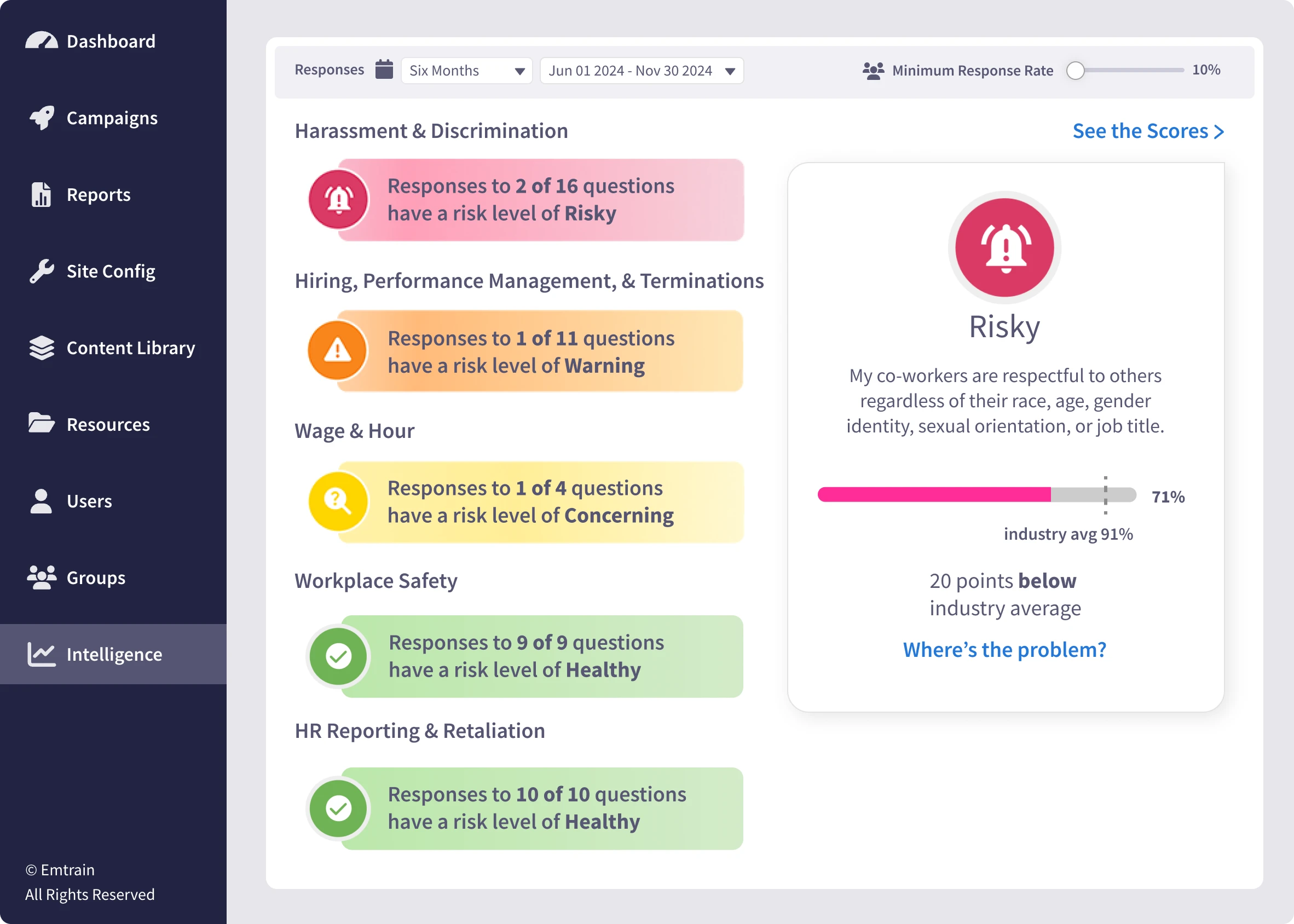Home » Concepts » Ethics & Compliance » Copyright
Copyright infringement in the workplace happens when someone uses copyrighted materials without proper permission or license in a way that violates one or more of the exclusive rights held by the copyright owner. This can include copying, distributing, displaying, performing, or creating derivative works of copyrighted materials when such actions are not permitted under a license, the doctrine of fair use, or other legal exceptions. Even using an internal shared drive or intranet improperly can be infringement if the materials are protected and not cleared for that kind of use.
Emtrain’s harassment training course is engaging, interactive, and designed to spot and reduce EEO risk.

Copyright infringement in the workplace happens when someone uses copyrighted materials without proper permission or license in a way that violates one or more of the exclusive rights held by the copyright owner. This can include copying, distributing, displaying, performing, or creating derivative works of copyrighted materials when such actions are not permitted under a license, the doctrine of fair use, or other legal exceptions. Even using an internal shared drive or intranet improperly can be infringement if the materials are protected and not cleared for that kind of use.
Here are some real-world examples of how copyright shows up in an office setting, both correctly and incorrectly:
| Scenario | What Happens | Why It Might Be an Infringement |
|---|---|---|
| Using images in presentations without checking licensing | An employee downloads photos from the internet and inserts them into a slide deck for a client pitch, without confirming rights. | If the image is copyrighted and not under a free license, and the usage is not covered by fair use or by company-license, then it’s infringing. |
| Sharing copyrighted reports internally | Someone uploads a market research report (or a summary with large quoted sections) to the company’s intranet or shared drive for colleagues to view. | The report is likely protected; distributing it (even internally) without permission may violate copyright. |
| Copying or distributing software beyond licensed seats | Employees install software on more machines than permitted, or replicate licensed software material for others. | This exceeds the licensing agreement and infringes the distribution rights of the copyright owner. |
| Using music or video clips in internal or external communication | For example, inserting a song clip in a promotional video or playing tracks publicly in the office or on external communications without license. | Performing, distributing, or publicly displaying copyrighted audio or video without licensing is infringement. |
| Reusing text or other creative work from colleagues or outside sources | Copying blog content, articles, or templates from external websites into company content or website, without credit or licensing. | Even with attribution, reproducing copyrighted text or content without permission can infringe unless fair use or licensing allows it. |
To reduce risk and ensure respect for copyright, companies should adopt clear practices:
In this scenario, a group of employees reflects on the success of a leadership performance program they’ve been using. When one employee suggests copying the program’s tools and processes for their own business purposes, the conversation shifts. Other team members raise concerns about whether it’s ethical—or even legal—to use another party’s work without permission. The discussion highlights the real-world risks of copyright misuse and underscores the importance of respecting intellectual property in the workplace.